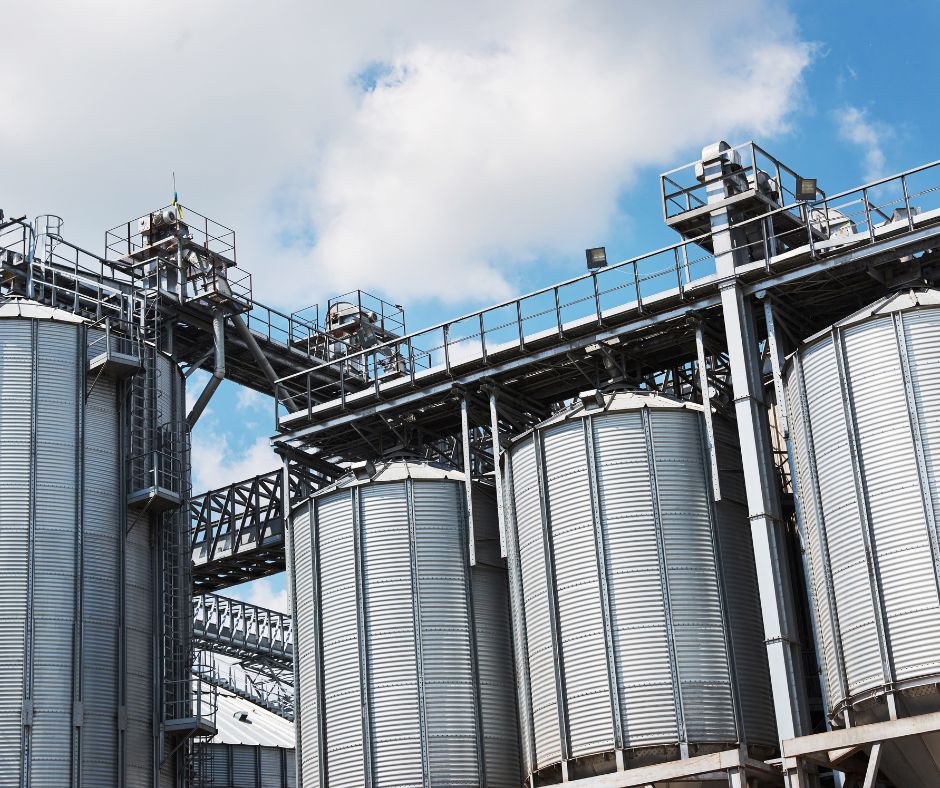
Efficiency and Durability: Unveiling the Significance of Industrial Storage Tanks
In the intricate web of industrial operations, where precision and reliability are paramount, the silent guardians ensuring the smooth flow of processes are Industrial Storage Tanks. These formidable structures are the unsung heroes, standing tall and resilient in their duty to securely contain liquids, gases, and various raw materials indispensable to a myriad of industrial applications. This article embarks on an extensive journey into the world of Industrial Storage Tanks, unraveling their diverse types, applications, construction intricacies, regulatory nuances, technological advancements, and the indispensable role they play in fostering operational excellence across industries.
-
Types of Industrial Storage Tanks: The landscape of industrial storage tanks is broad and varied, with each type meticulously designed to meet specific needs and challenges.
- Aboveground Storage Tanks (ASTs): Towering above the industrial terrain, ASTs are the stalwarts of storing large quantities of liquids such as oil, chemicals, and other essential raw materials.
- Underground Storage Tanks (USTs): Operating surreptitiously beneath the earth’s surface, USTs find their purpose in safeguarding hazardous substances, minimizing environmental impact and optimizing space utilization.
- Fixed Roof Tanks: With a steadfast roof that remains stationary, these tanks are ideal for storing liquids that do not emit vapors during storage, ensuring the utmost safety and containment.
- Floating Roof Tanks: Featuring a dynamic floating roof that adjusts with the liquid level, these tanks are particularly suited for storing volatile substances, mitigating the risk of emissions, and optimizing storage capacity.
-
Applications Across Industries: The versatility of industrial storage tanks knows no bounds, permeating through various industrial sectors and becoming an integral cog in their operational machinery.
- Oil and Gas Industry: From the extraction of crude oil to the storage of refined products, industrial storage tanks play a crucial role in maintaining the fluidity of operations in the oil and gas industry.
- Chemical Manufacturing: Chemical plants rely on the robustness of these tanks to store raw materials, intermediates, and finished products, ensuring the integrity of their chemical processes.
- Water Treatment: In the domain of water treatment, industrial storage tanks serve as the custodians of chemicals vital for the purification process, contributing to the provision of clean and potable water.
- Food and Beverage: Tanks in this sector are entrusted with the responsibility of storing ingredients, additives, and finished products, aligning with the stringent quality standards inherent in the food and beverage industry.
-
Materials and Construction: The longevity and safety of industrial storage tanks hinge on the judicious choice of materials and the precision in their construction.
- Carbon Steel: Renowned for its durability, carbon steel tanks are the workhorses of the industry, capable of withstanding the rigors of diverse applications.
- Stainless Steel: Exhibiting resistance to corrosion and chemical damage, stainless steel tanks emerge as the preferred choice for storing corrosive substances, guaranteeing longevity and reliability.
- Fiberglass Reinforced Plastic (FRP): Combining strength with corrosion resistance, FRP tanks offer a lightweight yet robust solution for a multitude of industrial applications, showcasing versatility and adaptability.
-
Regulatory Compliance and Safety Measures: The operation of industrial storage tanks is governed by a labyrinth of regulations, designed to ensure the safety of personnel, the integrity of the environment, and the overall sustainability of industrial processes.
- EPA Regulations: The Environmental Protection Agency (EPA) serves as the guardian of environmental health, setting stringent guidelines for the storage and handling of hazardous materials, demanding compliance from industries.
- OSHA Standards: The Occupational Safety and Health Administration (OSHA) wields its influence to establish standards safeguarding workers engaged in tank-related activities, fostering a culture of safety and accountability.
- Inspection and Maintenance: The proactive approach to maintaining the health of industrial storage tanks involves regular inspections and meticulous maintenance routines, identifying potential issues before they manifest into critical concerns, and thus averting accidents and disruptions.
-
Advancements in Technology: The inexorable march of technology has ushered in a new era for industrial storage tanks, elevating their functionality and efficiency to unprecedented levels.
- Smart Monitoring Systems: The integration of sensors and sophisticated monitoring systems heralds a new age of real-time data acquisition, providing invaluable insights into the conditions within the tanks, enhancing operational efficiency, and ensuring safety.
- Automation: The realm of automation brings forth a paradigm shift in the operation of industrial storage tanks. Automated systems streamline processes such as filling, emptying, and cleaning, reducing manual intervention, minimizing human error, and optimizing operational efficiency.
Conclusion:
In the grand tapestry of industrial operations, Industrial Storage Tanks emerge not merely as vessels but as stalwart custodians of operational continuity, safety, and sustainability. Their significance transcends the mere containment of materials; they are the linchpin holding together the intricate machinery of diverse industries. As we traverse further into the future, the evolution of industrial storage tanks, fueled by technological advancements, will undoubtedly continue to redefine standards, setting new benchmarks for efficiency, safety, and environmental stewardship. In this dynamic landscape, these silent sentinels will persist in their crucial role, ensuring the seamless flow of industrial processes and contributing to the foundation of a resilient and sustainable industrial ecosystem.



